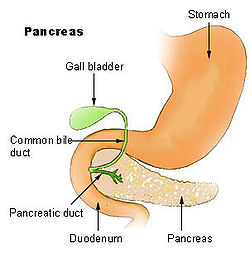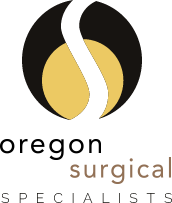GENERAL SURGERY
Abdominal Surgery
Cholecystitis: Inflation of the Gallbladder
 Cholecystitis is the term for inflammation of the gallbladder. The gallbladder is the organ that stores bile after it is produced by the liver, and then releases it into your small intestine, when needed, to help digest fat.
Cholecystitis is the term for inflammation of the gallbladder. The gallbladder is the organ that stores bile after it is produced by the liver, and then releases it into your small intestine, when needed, to help digest fat.
Gallstones, which are hard “pebbles” composed of bile, may form in the gallbladder or may block the ducts, causing pressure to build up behind them. Gallstones are a very common cause of cholecystitis. Women are more likely than men to suffer discomfort from gallstones. Other risk factors include high blood triglycerides, being overweight or pregnant, and having diabetes or a family history of cholecystitis.
Signs and Symptoms
Discomfort caused by the gallbladder is often called “biliary colic” because bile is stored in the gallbladder and the pain often comes in spasms, like colic. It usually begins as intermittent pain and cramping that becomes more constant over time, and centers in the middle to right upper side of the abdomen. Other symptoms may include:
- Fever.
- Nausea and/or vomiting.
- Anorexia (loss of appetite).
- Pain when probing the right upper quadrant of your abdomen.
Lab Tests and Imaging Studies
An ultrasound of the right upper quadrant may show gallstones, a thickening of the gallbladder wall, or fluid around the gallbladder. This test is done while you are awake and is usually not painful.
A HIDA scan can be used to determine how well the gallbladder is functioning. HIDA is a chemical labled with a small amount of a radioactive tracer that the doctor injects into your vein through an IV line. It is taken up by your liver and passed with the bile to your gallbladder. A special camera placed over your abdomen can follow the tracer as it moves though your system, so the doctor can see how well the gallbladder is working. This procedure is typically not painful, once an IV has been placed. The tracer is not harmful to you and the radioactivity dissipates within hours after it is given.
A CT scan can show thickening of the gallbladder wall and any fluid around the gallbladder if it is present. CT scans are painless, but you must lie on a table that moves you into a tunnel where x-rays are taken from all around you.
Laboratory tests. Your doctor may also request a blood sample to make sure you are not anemic or fighting an infection, and to check the health of your liver and pancreas.
Medical Management
Sometimes cholecystitis resolves on its own. If infection is present, your doctor may prescribe one or more courses of antibiotics, and a low-fat diet may help reduce the pain. However, if gallstones are present or if the pain continues, surgical removal of your gallbladder (cholecystectomy) may be indicated.
If you must have your gallbladder removed surgically, there are two options: open cholecystectomy and laparoscopic cholecystectomy.
With open cholecystectomy, either a 5 to 8-inch long incision is made on the right side of your abdomen just below your ribs, or a midline incision is made between the belly button and xiphoid. The operation may take 1 to 2 hours and you will spend up to a week in the hospital.
In laparoscopic cholecystectomy, the doctor makes 4 or so inch-long incisions and uses them to insert a tiny camera and other surgical tools that will remove the gallbladder. After inflating your abdomen with gas to make the organs visible, the doctor can watch what is happening on a TV screen while using the tools to remove the gallbladder through one of the incisions. When the operation is done laparascopically, both recovery time and pain are less. You may be back to your normal routine in 3 to 5 days. However, sometimes the operation must be done in an open fashion. Your doctor will advise you about your best option.
Reasons for Surgery
The main reason for surgery to remove the gallbladder is cholecystitis, or inflammation of the gallbladder. Some signs and symptoms of cholecystitis include:
- Severe abdominal pain or cramping after eating
- Nausea and vomiting, heartburn
- Changes in bowel movements such as loose stool
- Slight fever or chills
